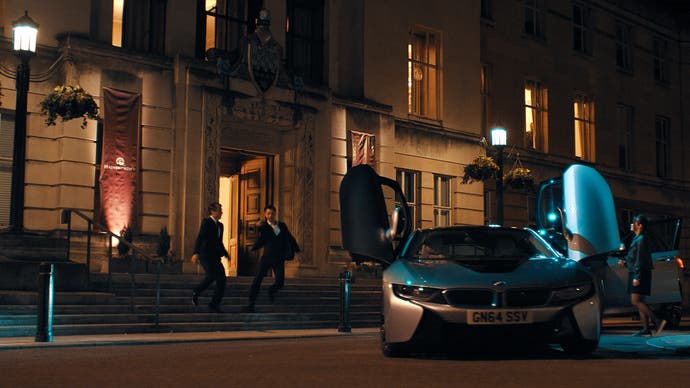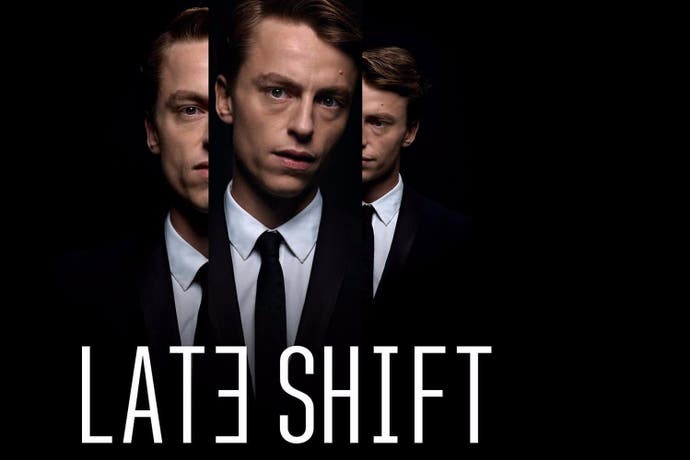Late Shift review
Night trap.
For those who view video games as an adjunct to cinema rather than an alternative, the rise and fall of the interactive movie in the mid-1990s was something of a befuddling mystery. For a moment, and from a particular angle, the cinematic Choose Your Own Adventure, a genre facilitated by the advent of CD-Rom technology that allowed film clips to be spliced together to tell a story according to the whims of the viewer, seemed like the future of games. It was not to be.
Late Shift is one of a gathering number of contemporary projects, from Quantum Break to Her Story to Wales Interactive's own The Bunker, to return to the inextinguishable promise of interactive filmmaking. This is a broadly traditional take on the concept, albeit one that's been lavishly filmed, and penned by Michael R. Johnson, co-writer of Guy Ritchie's 2009 boisterous take on Sherlock Holmes. You play as Matt Thomson, a wunderkind mathematics student with a fruity South London accent who moonlights as a security guard in a car park, an underground stable for luxury vehicles.
One night, while working the late shift, Thomson becomes embroiled in a plot to scam an eminent London auction house. The target is a Ming dynasty-era rice bowl that is worth millions. It's a choice of McGuffin that leads to some inadvertently comical lines (e.g.: "I haven't got your fucking rice bowl"), but the script reassures us that it's a prize for which, over the centuries, "many have died". Thomson's descent into the criminal world is swift but not necessarily inexorable. The choices you make as the story unravels dictate whether or not he crosses lines that take him into the realms of felonious guilt, or remains an unwilling co-conspirator, able to later prove his innocence.

Production values are strikingly high, as evidenced by the king's ransom of props seen on screen (a hangar full of supercars, for one), a raft of interior and exterior locations around London (including aerial shots of the city) and the voluminous cast. Thomson, played by Joe Sowerbutts, is the standout performance but, while the game's running time is around a third less than a typical film, the format's need to keep the camera trained on him as the playable protagonist becomes, in time, a little exhausting. There are no scenic diversions to focus on other characters, and no moments of comic relief to add nuance to the thriller rhythm.
Unlike in most other so-called FMV games (hangover nomenclature from when video game cutscenes has to be rendered in full motion video, rather than created in-engine) there are no 'idling' clips, where, for example, a character picks at her fingernails while waiting for you to make a decision. When a choice flashes up on screen (e.g. 'fight' or 'flight') you have just a few seconds to make your selection. Not picking an option is in itself a choice; the film plays on regardless. The technique, which initially seems like a cop-out of sorts, means that the story maintains its pace and maintains immersion. There are no awkward and inauthentic interludes. You must make snap decisions under the same pressure experienced by the protagonist. A symptom of the design means that, if you simply place the controller down, the story will happily play out without your guidance.
As with all examples of the genre, the format immediately forces you to question what difference your choices make to the plot. It's impossible to know whether or not the decision to, for example, surrender at gunpoint will have a different outcome to the decision to take your chances and make a run for the fence. The script works hard to convince you that your choices carry weight ("You are your decisions," says Thomson, in the game's wistful opening. "That's what shapes you."). But we have been immunised to the tricks employed by game designers to give the feel of plot diverging options (the multitude of binary responses in Persona 5 for example that, in reality, elicit the exact same response from game characters).

It's not until you reach the game's conclusion, and the designers pull back the curtain to reveal your 'statistics' that you appreciate just how divergent the journey can be. There are seven endings, a possible 14 chapters, and more than 180 decisions to be made along the way. Entire chapters can be missed depending on your choices, and as a result the game's running time is flexible. There are, of course, no ways to discern which choices truly affect the plot, and which provide mere momentary diversions - at least, not on your first viewing. Arguably, this has the effect of causing you to treat every choice with the same weight. There are not, however, enough dead ends, to truly cause you to buy into the idea that every moment is a life-or-death choice.
Aside from these structural concerns, which occasionally lead to some continuity errors, the plot is too exaggerated to feel believable. The demands on Sowerbutts in particular, which require him to play not one character but a clutch of different versions of Thomson, able to make vastly different choices in any given situation, prove insurmountable. The character who, in one scene, chooses the pacifist option may later charge into a fight. The flexibility of the form cannot help but introduce these character inconsistencies, which combine to undermine the whole structure. Late Shift is, then, a fascinating and worthwhile experiment, but one that ultimately demonstrates that this particular blend of film and game is unable to deliver a satisfying version of either.

